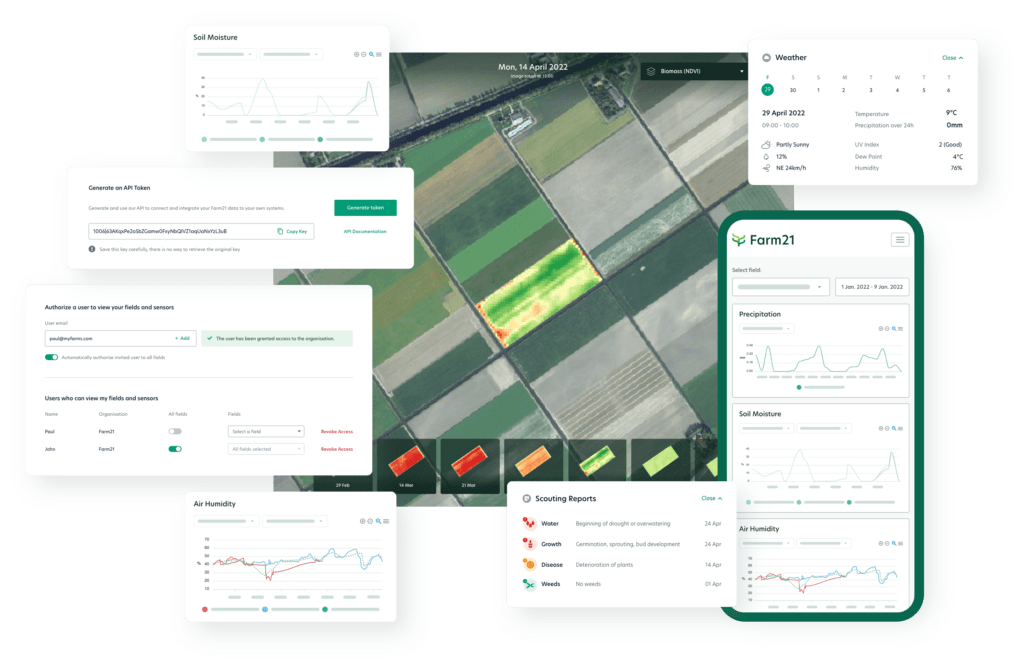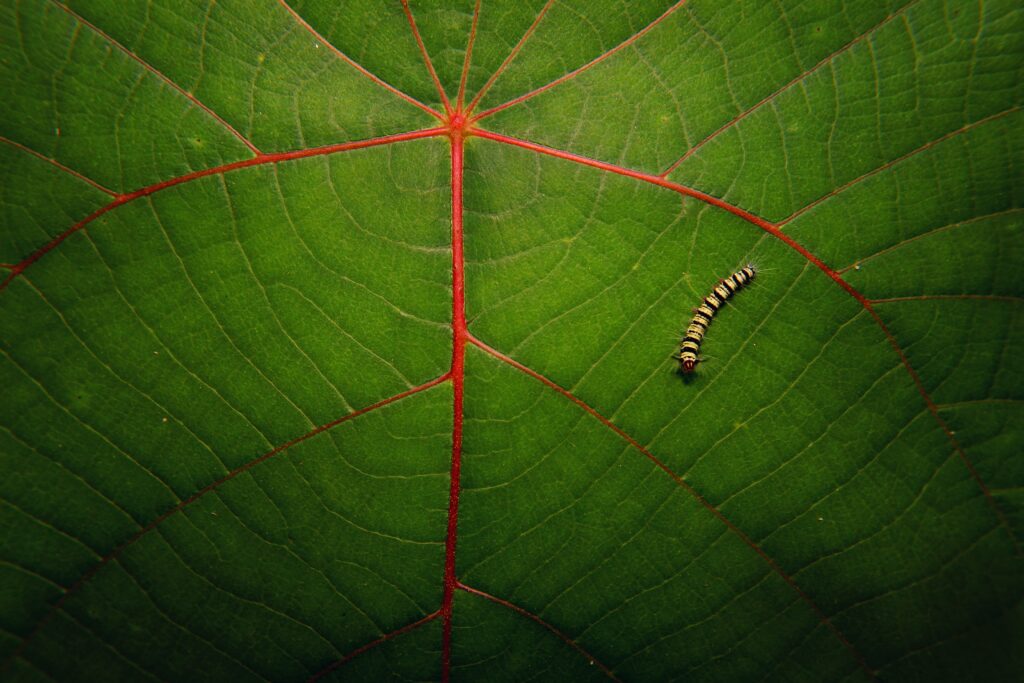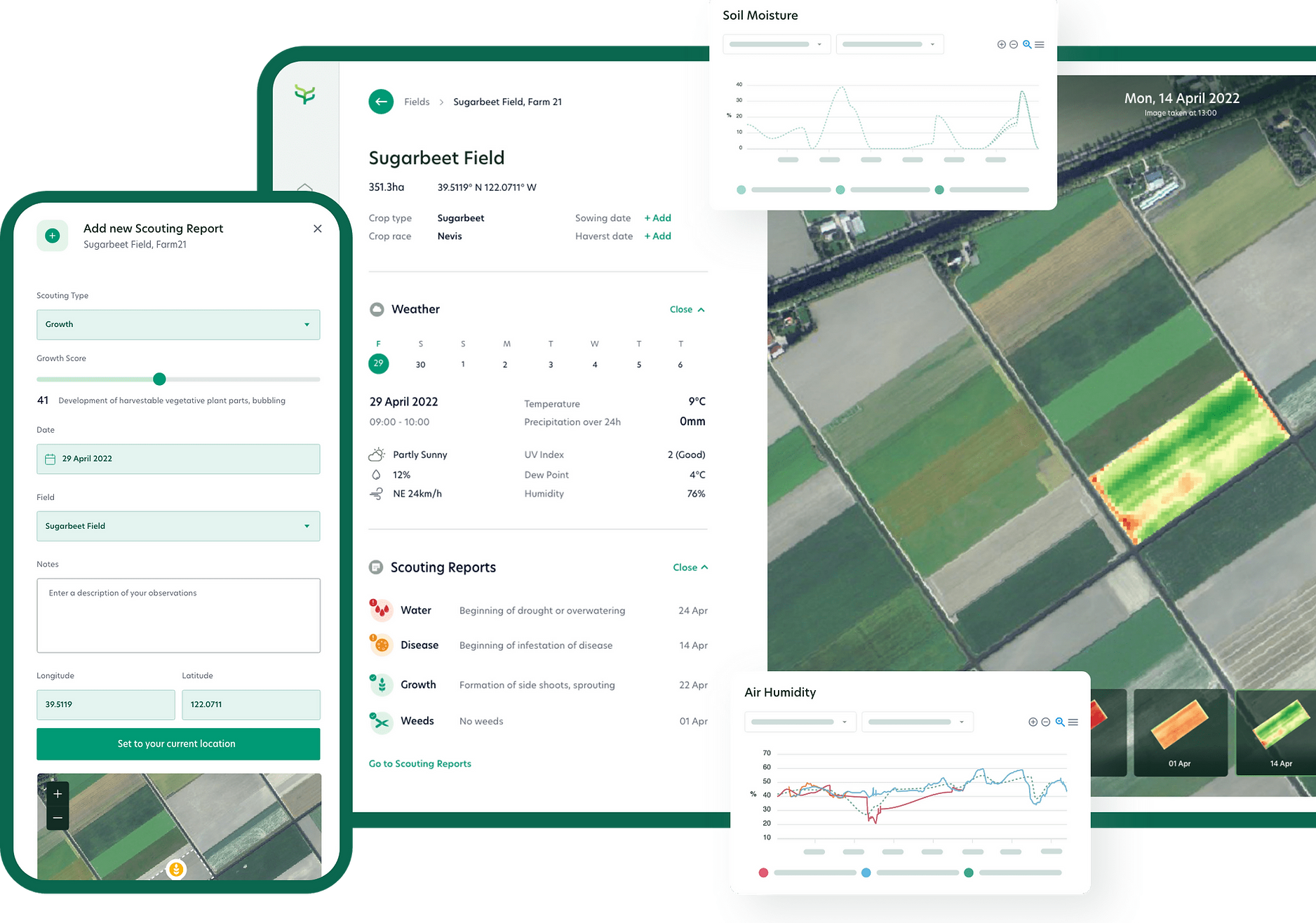Access the benefits of precision pest control with Farm21’s innovative solution.
Precision pest control is a game-changer in agriculture and gained importance in the 21st century. Discover the features and benefits of Farm21’s soil sensors and data platform, and how it improves the efficiency and effectiveness of pest management practices.
Precise treatment. Targeted results.
The concept of precision pest control has gained significant attention in recent years, as farmers and pest control professionals seek more targeted and effective ways to manage pests that threaten crops. Pest management practices have been under the spotlight for the effect they have on the environment, and extensive research has gone into how to manage pests more effectively and sustainably.
Blanket application of pesticides or other control measures can be costly, time-consuming, and potentially harmful to the environment and non-target species. By contrast, precision pest control approaches seek to apply control measures more selectively and at the most appropriate times, in order to maximise their effectiveness and minimise negative impacts.
The evolution of precision pest control
Precision pest control practices have evolved over time as a response to the increasing demand for more effective and environmentally-friendly methods of pest control. One of the earliest examples of precision pest control was the use of DDT, a highly effective insecticide, during World War II to control the spread of malaria and typhus. However, the widespread use of DDT and other synthetic pesticides in the following decades led to negative impacts on the environment and non-target species, most notably – birds.
In response to these concerns, researchers and pest control professionals began to develop more targeted and selective methods of pest control. This included the use of integrated pest management (IPM) approaches, which seek to minimise the use of pesticides through a combination of preventive measures, habitat modification, and targeted pest control methods.In recent years, precision pest control practices have further evolved to include the use of new technologies such as drones, sensor systems, and data analytics to more accurately detect and control pests. These approaches aim to improve the efficiency and effectiveness of pest control efforts, while minimising negative impacts on the environment.
One tool that can be used for precision pest control is the Farm21 soil sensor and data platform system, which is designed to monitor crop conditions in real-time, and provide valuable information for making informed pest management decisions.
Features and capabilities of the Farm21 sensor system
Farm21’s solution consists of affordable in-field sensors and a smart data platform that pulls information about the soil, weather conditions, crop climate, satellite imagery, and scouting information onto one central hub. Users can access accurate data from a multitude of sources, 24/7, in order to have a complete overview of what is happening in their fields. Since the data collected is more localised, it provides detailed insights, allowing users to take preventative rather than reactive action. The combination of data sources measuring a range of environmental factors is used to assess the presence and activity levels of pests, as well as other factors that can impact pest activity and control measures.
Improving precision pest control
Blanket application of pesticides or other control measures can be costly, time-consuming, and potentially harmful to the environment and non-target species. By contrast, precision pest control approaches seek to apply control measures more selectively and at the most appropriate times, in order to maximise their effectiveness and minimise negative impacts. Here are a few examples:
Accurate Measurements
Precise soil and air temperature measurements from FS21 sensors can be essential to precision pest control. Certain types of pests are more active at certain temperatures. By monitoring this closely, farmers and pest control professionals can predict when and where pests are likely to be present and can take targeted action to control them.
Suppose that a farmer is experiencing an infestation of aphids on their apple trees. The farmer could use soil temperature sensors to monitor the temperature of the soil at the base of the trees, and could use satellite data (like NDVI, NDRE, WDVI) to monitor the overall health and condition of the trees. By analysing this data, the farmer could determine that the aphid infestation is more severe in areas of the field where the soil temperature ranges between 15-25 °C and the trees are stressed. Based on this information, the farmer could take targeted action to control the aphids, such as applying a targeted pesticide application or introducing natural predators of the aphids.
Click here to read more about how a flower bulb grower from The Netherlands managed to prevent lice from damaging his delicate crop yield.
Satellite Data
Satellite data (accessed via Farm21’s platform) can be used in combination with soil temperature data to provide a more complete picture of favourable conditions for pest activity. Satellite data can provide supplementary soil temperature and moisture data, as well as crops’ overall health and condition. This information can help farmers and pest control professionals identify areas of the field where pests are most likely to be present and can also be used to track the movement of pests over time. This helps to ensure a more targeted approach, reducing the need for broad-spectrum pesticides and improving the overall efficiency of pest control efforts.
Real-time Data
Another way that Farm21’s soil moisture sensors can be used in precision pest control is by providing real-time data on soil moisture levels, which can help farmers and pest control professionals determine when and where pests are most likely to be present. For example, certain types of pests, such as grasshoppers and locusts, are more likely to be found in dry, arid regions where soil moisture is low. By monitoring soil moisture levels, farmers and pest control professionals can predict where these pests are likely to be found and take targeted action to control them.

The centralised space for your farming data
What makes Farm21’s system even more attractive, is the fact that users have access to it on a centralised digital space. The collected data is transmitted wirelessly to a central database, where it can be accessed and analysed by farmers, pest control professionals, and other stakeholders.
The data can be presented in various forms, such as maps, charts, and graphs, to provide a clear and visual representation of pest activity and environmental conditions.
Four ways in which Farm21’s technology can boost precision pest control
Real-time monitoring
One of the key advantages of the Farm21 sensor system is that it allows for real-time monitoring of pest activity based on environmental conditions. This can enable farmers and pest control professionals to take timely action to prevent or mitigate pest problems before they become severe, rather than relying on periodic inspections or the appearance of visible damage.
Targeted control measures
By providing accurate, up-to-date information about pest populations and environmental conditions, the Farm21 sensor system can help farmers and pest control professionals to apply control measures more selectively and at the most appropriate times. This can help to maximise the effectiveness of control measures, and minimise the risk of over or under application.
For example, it is common knowledge that wind speed, relative humidity and air and soil temperatures are key variables when spraying. To maximise efficiency, spraying should happen when wind speed is reasonable to avoid drift, air and soil temperatures are low and relative humidity is moderate-high.
Reduced use of plant protection products
The Farm21 sensor system can also help to reduce the use of pesticides and other chemical control measures. By providing information about pest populations and environmental conditions, the sensors can help farmers and pest control professionals to apply control measures only when they are needed, rather than applying them on a regular or preventive basis. This can help to minimise the risk of negative impacts on non-target species and the environment.
Improved crop management
In addition to helping to control pests, the Farm21 sensor system can also provide valuable information for other aspects of crop management. For example, the sensors can help farmers to optimise irrigation and fertilisation practices, by providing real-time, accurate data needed to make fact-based decisions.
Technologies and approaches for precision pest control
In addition to the Farm21 sensor and data platform system, there are a number of other technologies and approaches that can be used for precision pest control. For example, Spotta monitors pests 24/7 using IoT pods and alerting users before there’s damage to crops. Other solutions include:
Pheromone traps
Pheromones are chemical signals that are produced by many insects, and can be used to attract or repel other members of the same species. Pheromone traps use synthetic pheromones to attract pests, and can be used to monitor pest populations or to lure pests away from crops.
Biological controls
Biological control refers to the use of natural predators, parasites, or pathogens to control pest populations. This approach can be effective and environmentally friendly, but it requires careful planning and management to avoid negative impacts on non-target species.
Decision support systems
Decision support systems are computer programs that use data and algorithms to help farmers and pest control professionals make informed decisions about pest management. These systems can integrate data from multiple sources, including sensors, weather data, and agronomic information, to provide recommendations for pest control measures.

Precision pest control is a modern approach to managing pests that seeks to apply control measures more selectively and at the most appropriate times, in order to maximise their effectiveness and minimise negative impacts.
The Farm21 sensor system is one tool that can be used for precision pest control, and offers a number of benefits, including real-time monitoring, targeted control measures, reduced use of pesticides, and improved crop management.
Create a FREE account and start scouting today
One easy-to-use platform for all your scouting reports, the perfect place to log and share insights with external stakeholders
Download our app

